Python - 深夜数据结构与算法之 剪枝
目录
一.引言
剪枝对应为检索的优化,最基本的检索例如 DFS、BFS,而剪枝的主要目的则是减少无用的搜索,提高算法效率,下面我们看下常用的剪枝策略与实现方法。
二.剪枝的简介
1.初级搜索方式
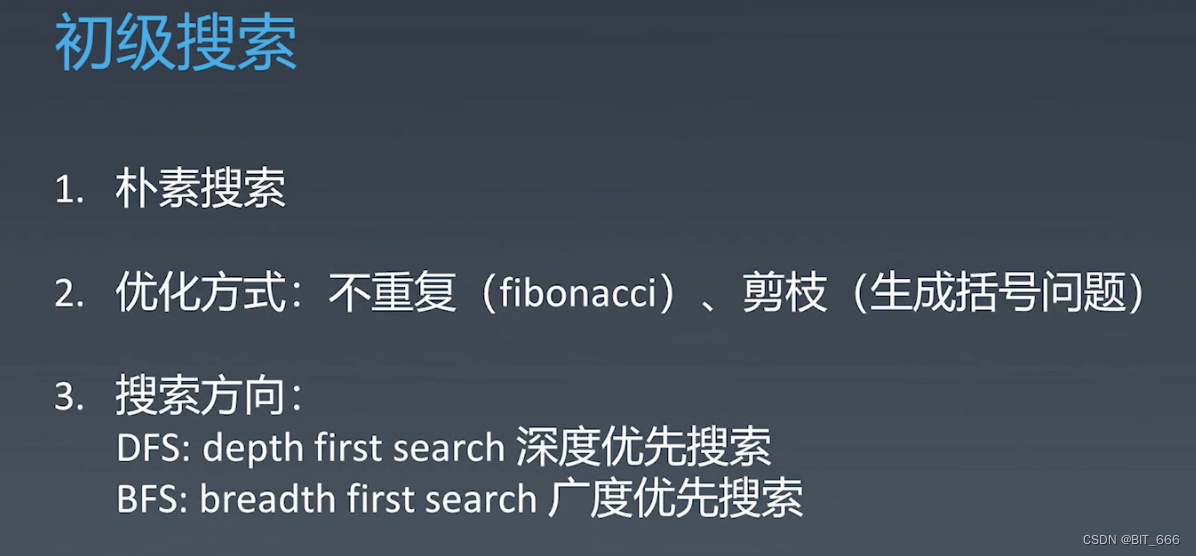
初级搜索主要包含 DFS 深度优先以及 BFS 广度优先,其利用编程语言自带的递归方式或者 Stack、Dequeue 实现,我们前面的题目用到了很多次。由于其是暴力或者遍历的搜索,时间复杂度相对较高,所以经常需要进行优化,最常见的优化就是不重复,我们可以构建一个 Cache、Memo 缓存结果例如 Fib,也可以增加判断条件例如括号生成的左右括号数量限制。
2.高级搜索方式
◆ 双向 BFS
BFS 广度优先遍历会优先找自己周围的元素,而双向 BFS 则是从起点和终点同时 BFS 搜索,最终在中间位置相遇,提高搜索的效率。
◆ 启发式搜索
启发式搜索又叫 A* 搜索,它的实现基于优先级队列即 Priority-Queue,其不拘泥于 DFS、BFS,而是根据每个状态分叉的优先级决定下一步走哪里,走哪里可能的收益更高。
3.搜索模版回顾
◆ DFS - 递归
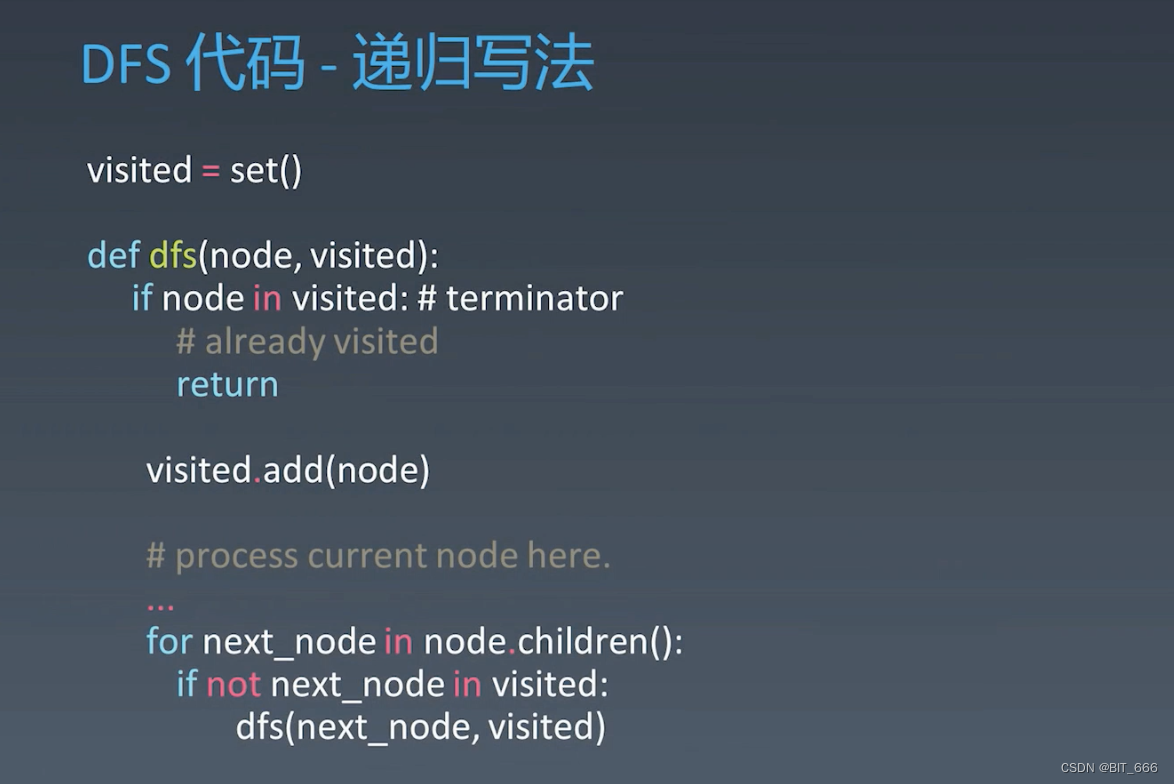
◆ DFS - 非递归?
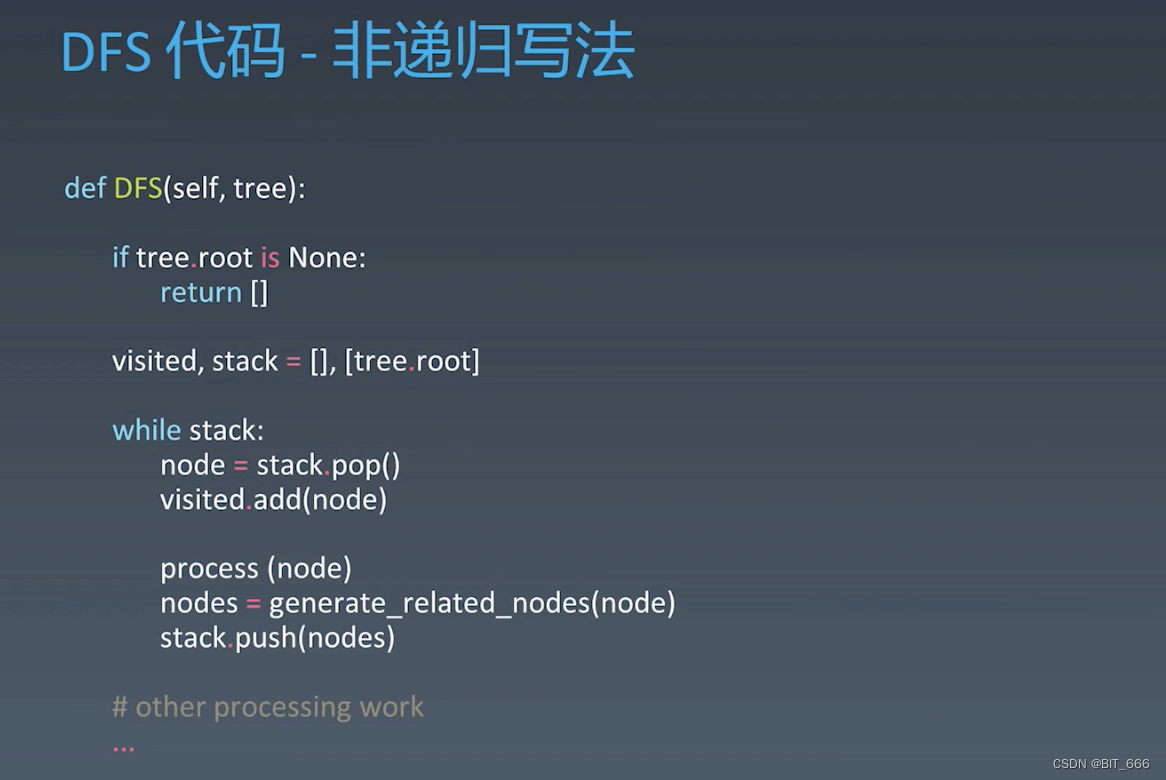
◆ BFS?- 栈?
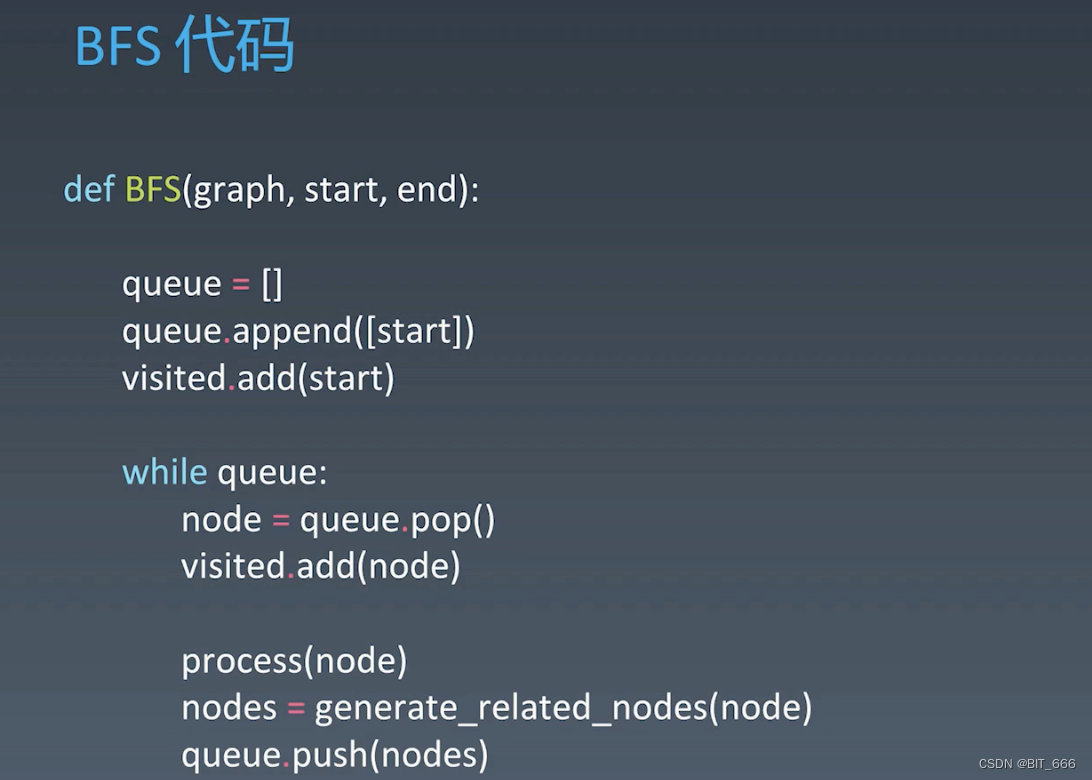
◆ 分治-回溯
通过分治的方法寻找可能的答案,如果答案不对则回退 1 步或者 N 步,到原有的状态继续探索新的路径。
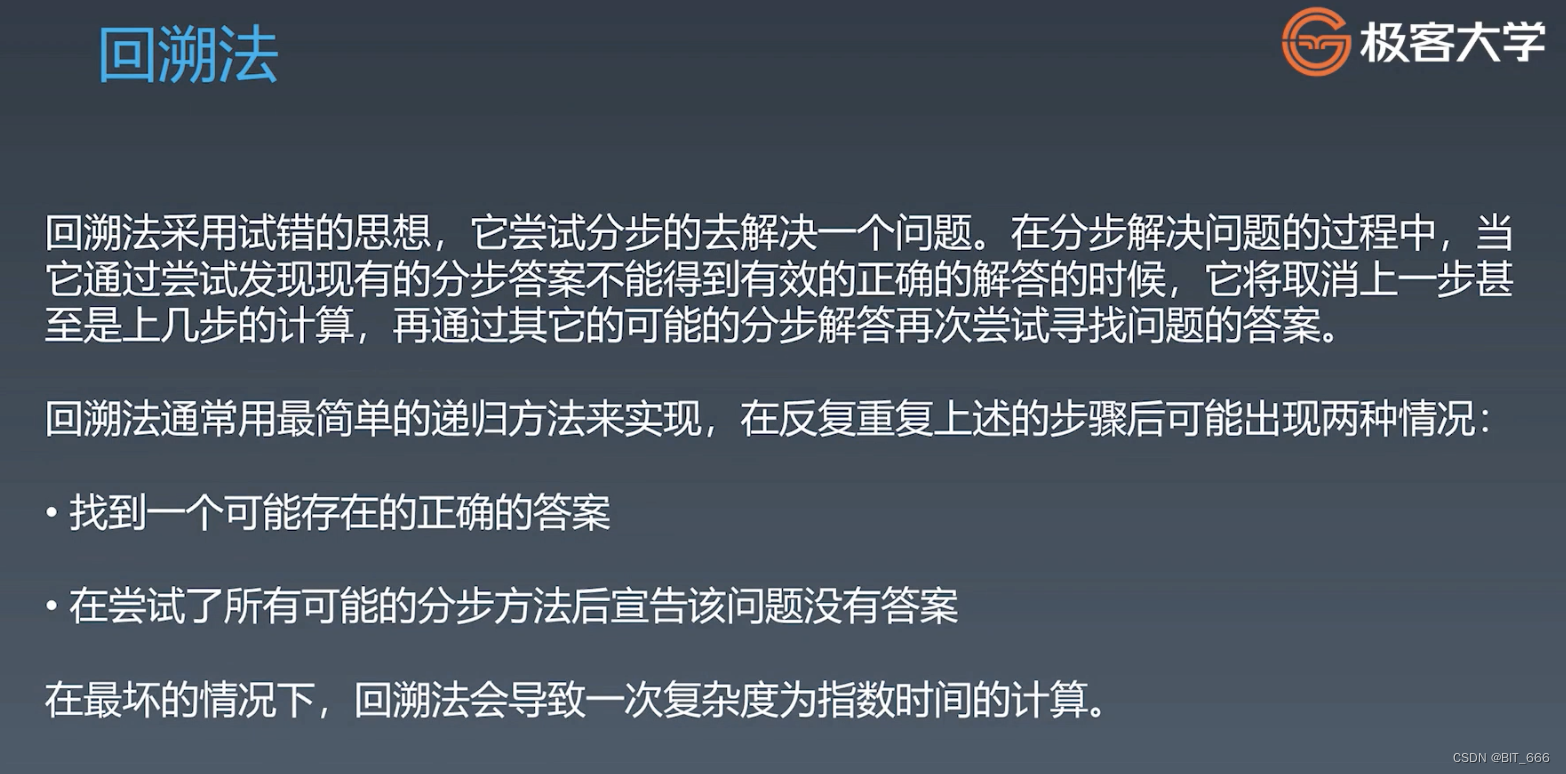
4.剪枝
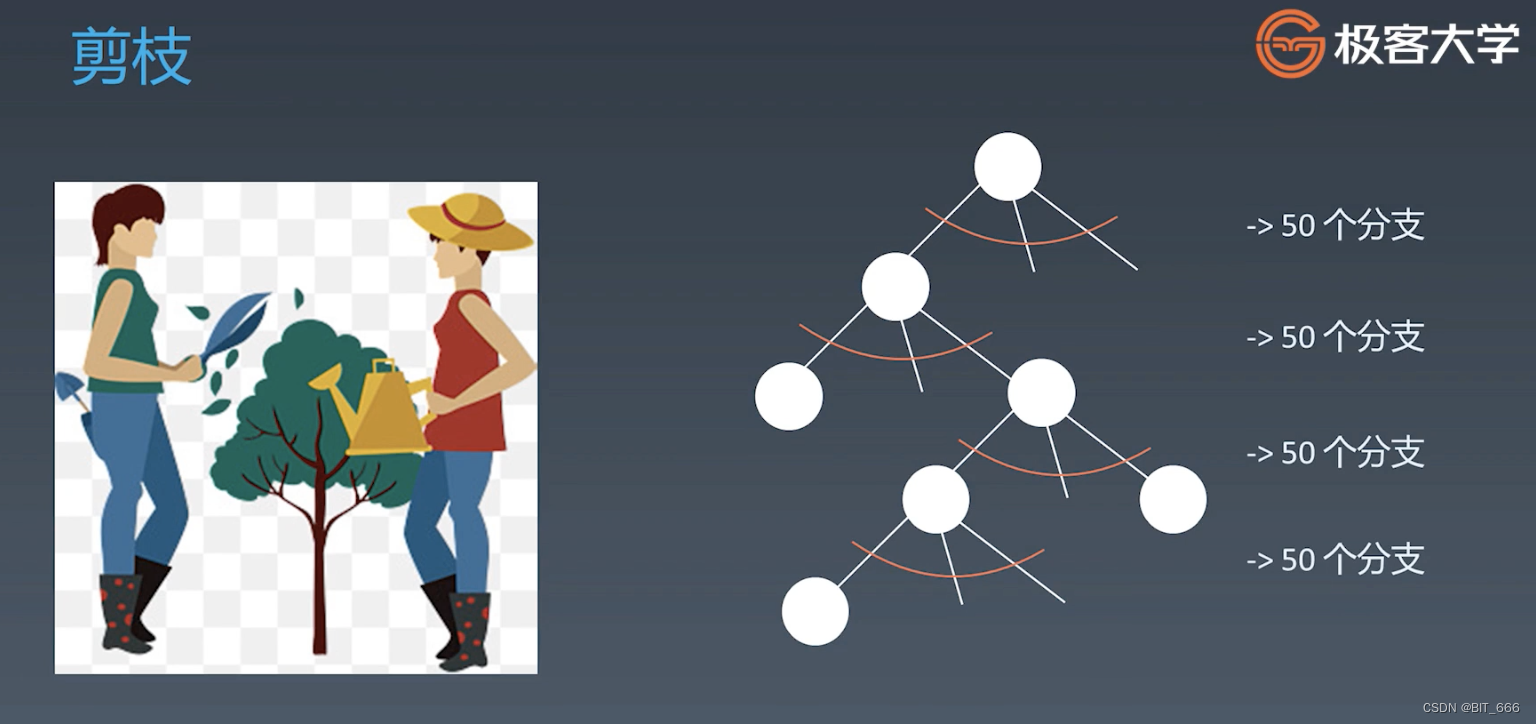
当我们对应问题生成其状态树时,我们可以通过 Cache 的方法,避免重复计算,从而减少分支的计算,或者判断当前的分支不够好,我们也可以剪枝避免多余的计算。
三.经典算法实战
1.Climbing-Stairs [70]
爬楼梯:?https://leetcode-cn.com/problems/climbing-stairs/
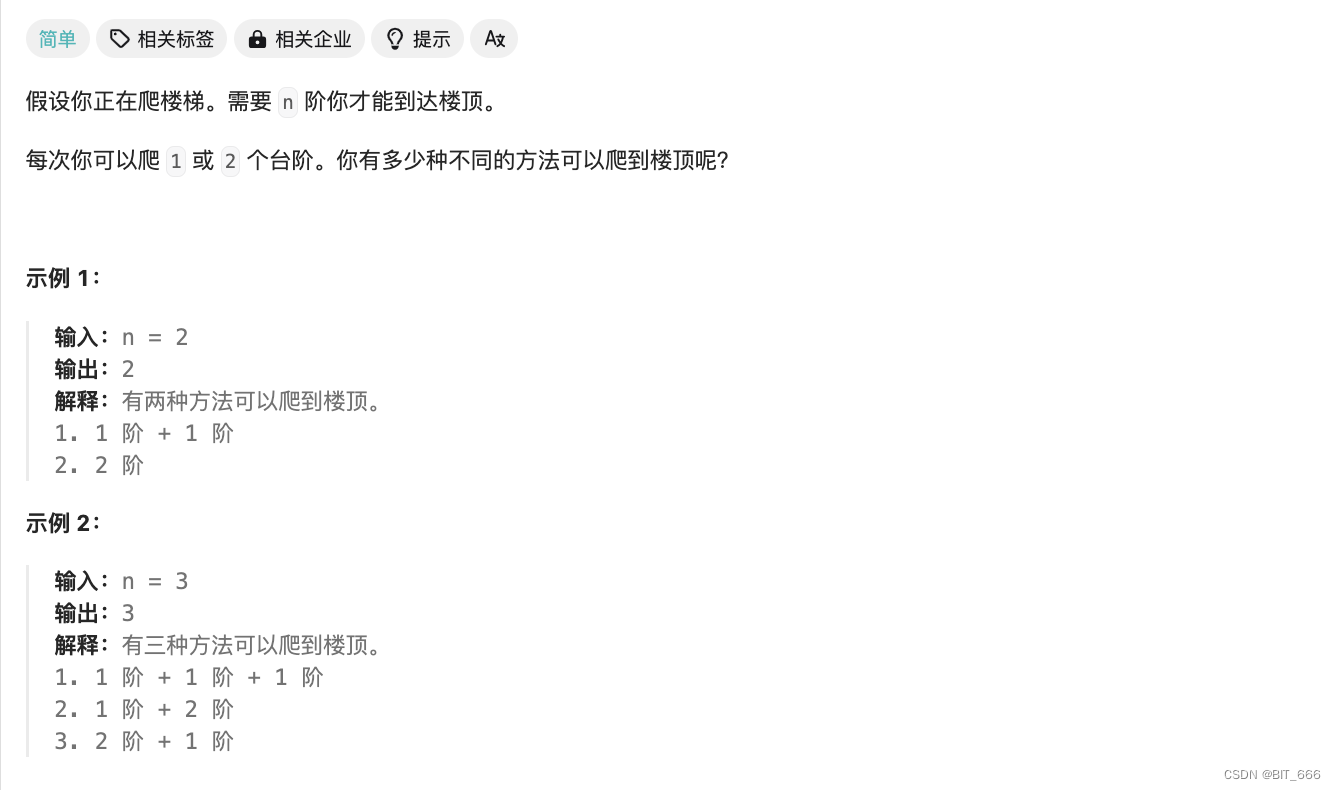
◆ 题目分析
爬楼梯每次可以走 1 步也可以走 2 步,对应 F(n) = F(n-1) + F(n-2),所以可以转换为 Fib,这里我们不嫌重复,再次用三种方法实现下 Fib,主要是感受剪枝的常规操作。
◆ 暴力递归
class Solution(object):
def climbStairs(self, n):
"""
:type n: int
:rtype: int
"""
if n == 0 or n == 1:
return 1
return self.climbStairs(n-1) + self.climbStairs(n-2)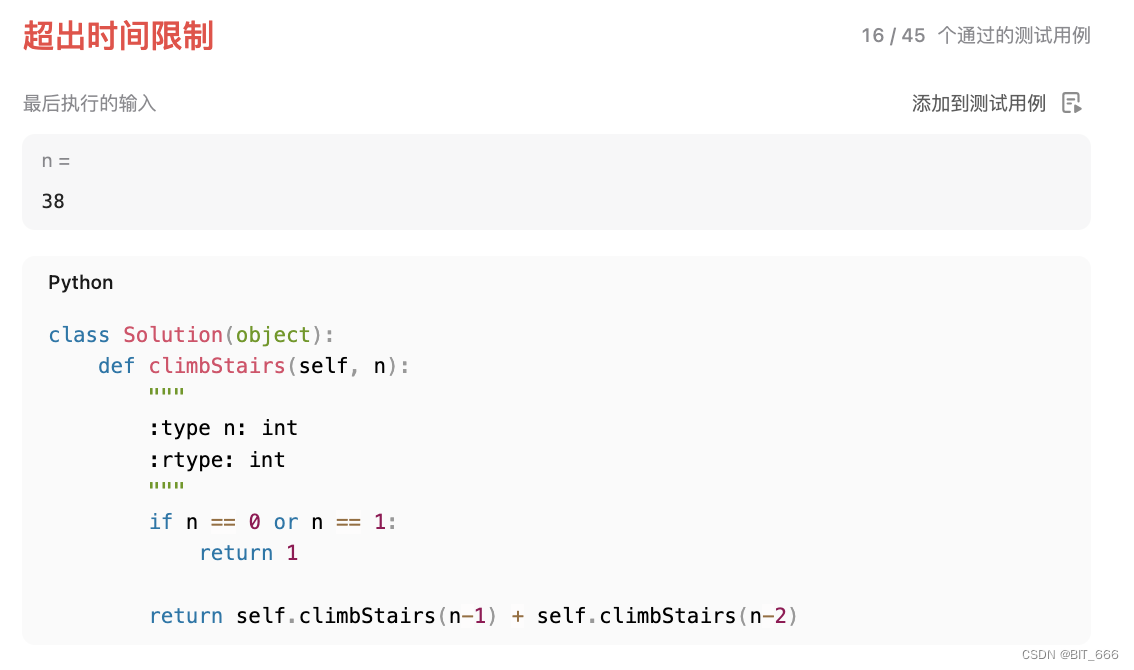
◆ 递归 + Cache
class Solution(object):
def __init__(self):
self.dic = {1:1, 2:2}
def climbStairs(self, n):
"""
:type n: int
:rtype: int
"""
if n not in self.dic:
self.dic[n] = self.climbStairs(n-1) + self.climbStairs(n-2)
return self.dic[n]
这里主要温习 cache 的写法,把直接要返回的值放到 cache 里,再返回 cache。?
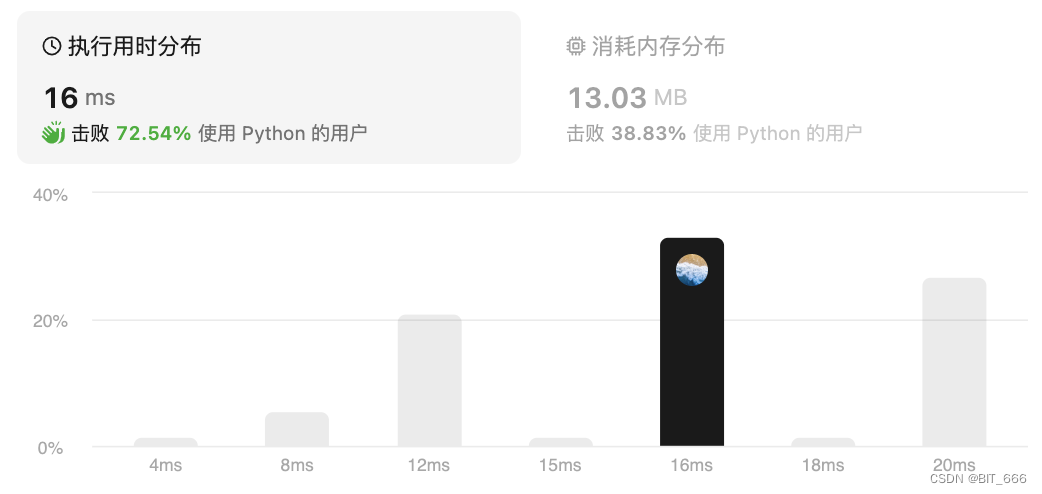
◆ DP Table
class Solution(object):
def climbStairs(self, n):
"""
:type n: int
:rtype: int
"""
if n <= 2:
return n
a, b, c = 1, 2, 3
# 滑动数组
for i in range(3, n):
a, b, c = b, c, b+c
return c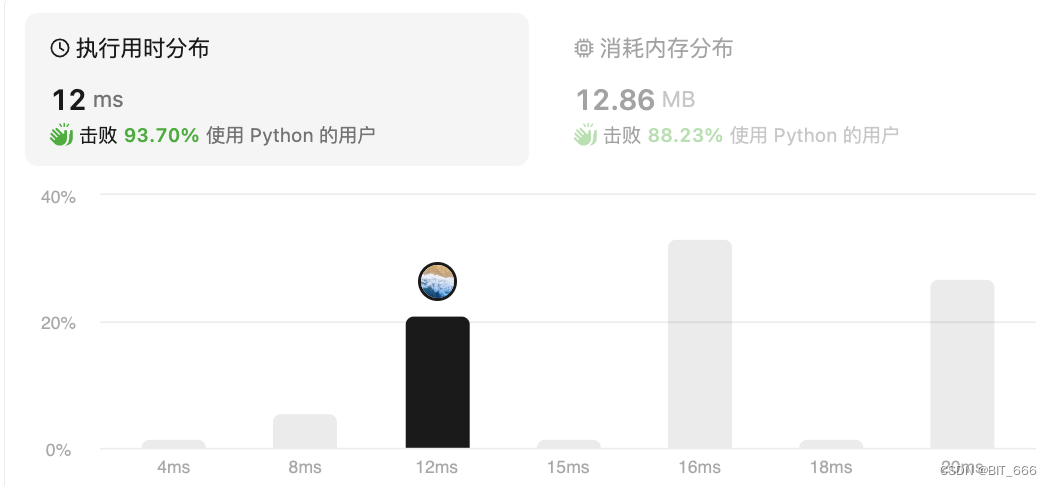
2.Coin-Change [322]
零钱兑换:?https://leetcode.cn/problems/coin-change/?

◆ 题目分析
以 1、2、5 为状态空间构建可能得状态树,寻找路径最短达到 target 金额的,就是最少的硬币数。
◆ 暴力递归
class Solution(object):
def coinChange(self, coins, amount):
"""
:type coins: List[int]
:type amount: int
:rtype: int
"""
# 给定目标金额,所需最少金币数量
def dp(n):
if n == 0:
return 0
if n < 0 :
return -1
# 结果
res = float('inf')
for coin in coins:
sub = dp(n - coin)
# 无解跳过,因为钱大不够找零
if sub == -1: continue
# 子问题 + coin = Amonut,所以子问题的 dp + 1 = Amount 的数量
res = min(sub + 1, res)
return res if res != float('inf') else -1
return dp(amount)
又又又超时啦,根据状态树可以看到时间复杂度是 o(k * n^k) 的,k 是 3 种取值,n^k 则是下面分叉找结果。下面尝试 Cache 优化。


◆ 递归 + Cache
class Solution(object):
def coinChange(self, coins, amount):
"""
:type coins: List[int]
:type amount: int
:rtype: int
"""
cache = {}
# 给定目标金额,所需最少金币数量
def dp(n):
if n in cache:
return cache[n]
if n == 0:
return 0
if n < 0 :
return -1
# 结果
res = float('inf')
for coin in coins:
sub = dp(n - coin)
# 无解跳过,因为钱大不够找零
if sub == -1: continue
# 子问题 + coin = Amonut,所以子问题的 dp + 1 = Amount 的数量
res = min(sub + 1, res)
cache[n] = res if res != float('inf') else -1
return cache[n]
return dp(amount)
cache 的套路写法,在返回值处记录参数与 return 值的关系,在开头处判断参数是否在 cache 中。慢悠悠的过啦 !
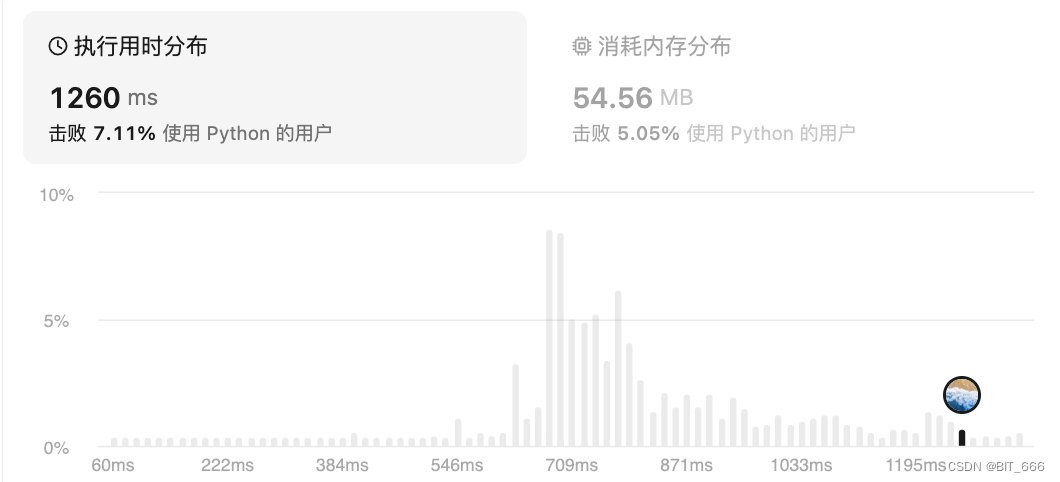
◆ DP Table
class Solution(object):
def coinChange(self, coins, amount):
"""
:type coins: List[int]
:type amount: int
:rtype: int
"""
# 初始化状态空间
# 凑 amount 至少可以是 amonut x 1 枚硬币
# 初始化一个比 amount 大的值都可以,这里也可以 float('inf')
dp = [amount + 1] * (amount + 1)
dp[0] = 0
# 外循环遍历所有状态值
for state in range(len(dp)):
# 内循环求最小值
for coin in coins:
# 子问题无解 跳过
if state - coin < 0: continue
dp[state] = min(dp[state], dp[state - coin] + 1)
return dp[amount] if (dp[amount] != amount + 1) else -1将递归的形式转换为 DP 形式。?
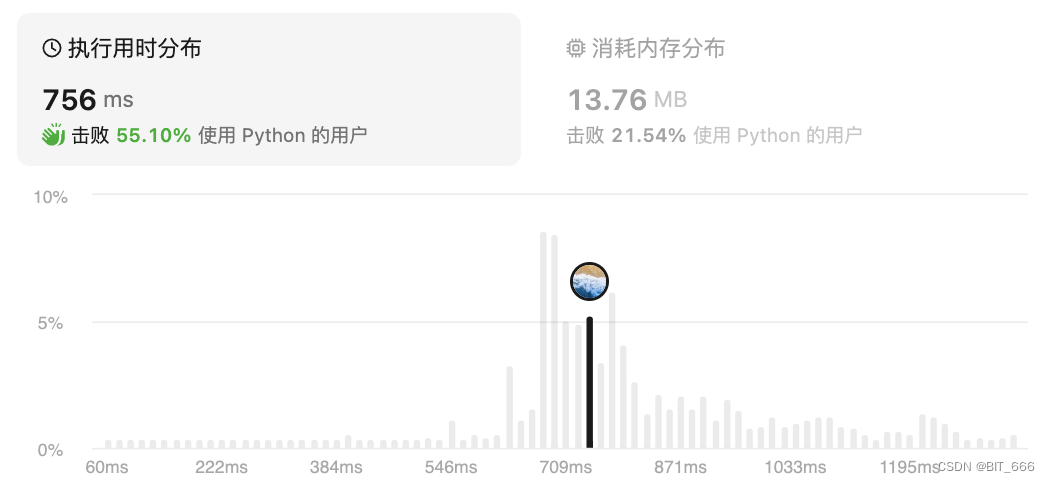
◆ DP Table 优化
class Solution(object):
def coinChange(self, coins, amount):
"""
:type coins: List[int]
:type amount: int
:rtype: int
"""
# 初始化一个较大的值
dp = [amount + 1] * (amount + 1)
dp[0] = 0
for coin in coins: # 遍历硬币
for j in range(coin, amount + 1):
dp[j] = min(dp[j], dp[j-coin] + 1) # DP 方程
ans = dp[amount]
return ans if ans != amount + 1 else -1上面判断了很多次 Coin 和 State 的关系,我们可以转换一下 for 循环顺序,对于 coin,只判断 coin - len(dp) 的范围即可,因为小的部分都被 amonut - coin < 0 找不开过滤掉了,所以这里进行了一层剪枝。这里给出了四个方法,我们从暴力到 Cache,Cache 到 Dp,最后到 DP 剪枝,大家可以好好体会下这个优化的过程。
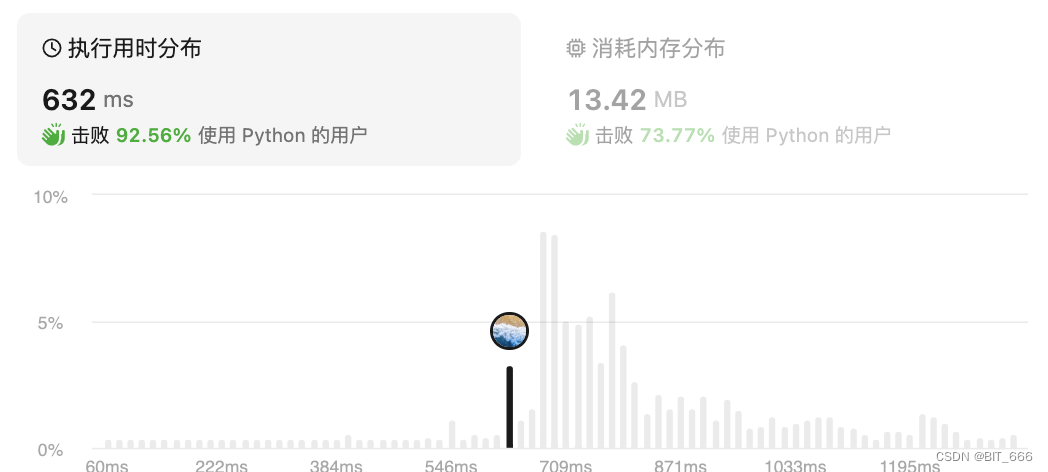
3.Generate-Parentheses [22]
括号生成:?https://leetcode.cn/problems/generate-parentheses/

◆ 题目分析
本题如果不剪枝的情况下,n 个位置都有左右括号两种情况,时间复杂度是 2^n 指数级别,通过增加 left 和 right 剪枝,提高程序效率,下面在 DFS 和 BFS 的基础上进行剪枝。
◆ BFS
class Solution(object):
def generateParenthesis(self, n):
"""
:type n: int
:rtype: List[str]
"""
res = []
queue = [("", 0, 0)]
while queue:
cur, left, right = queue.pop(0)
if left == right == n:
res.append(cur)
if left < n:
queue.append((cur + "(", left + 1, right))
if right < left:
queue.append((cur + ")", left, right + 1))
return res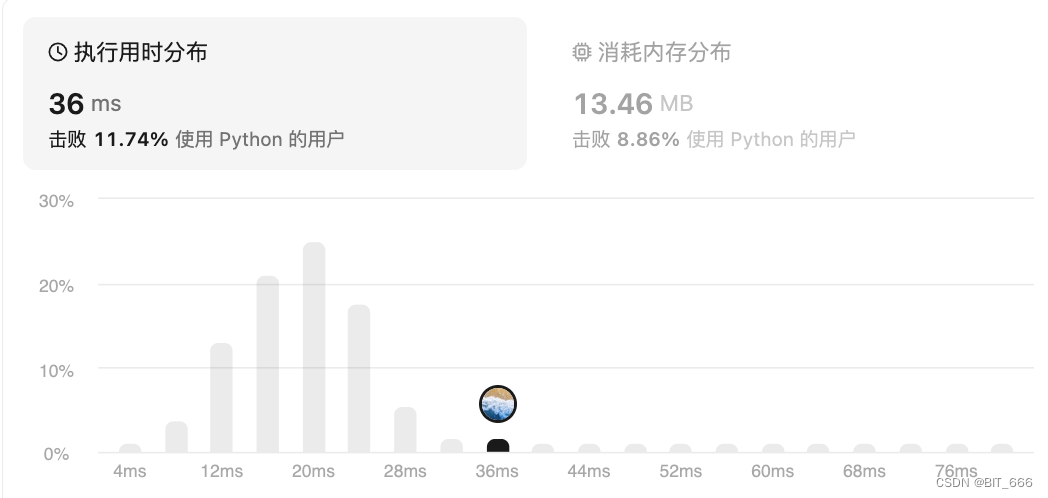
◆ DFS
class Solution(object):
def generateParenthesis(self, n):
"""
:type n: int
:rtype: List[str]
"""
# 保存结果
result = []
self.generate(0, 0, n, "", result)
return result
def generate(self, left, right, n, s, result):
if left == n and right == n:
result.append(s)
# 保证最左边一定是 '('
if left < n:
self.generate(left + 1, right, n, s + "(", result)
# right 不够就补充
if right < left:
self.generate(left, right + 1, n, s + ")", result)
4.N-Queens [51]?
N 皇后:?https://leetcode.cn/problems/n-queens/description/
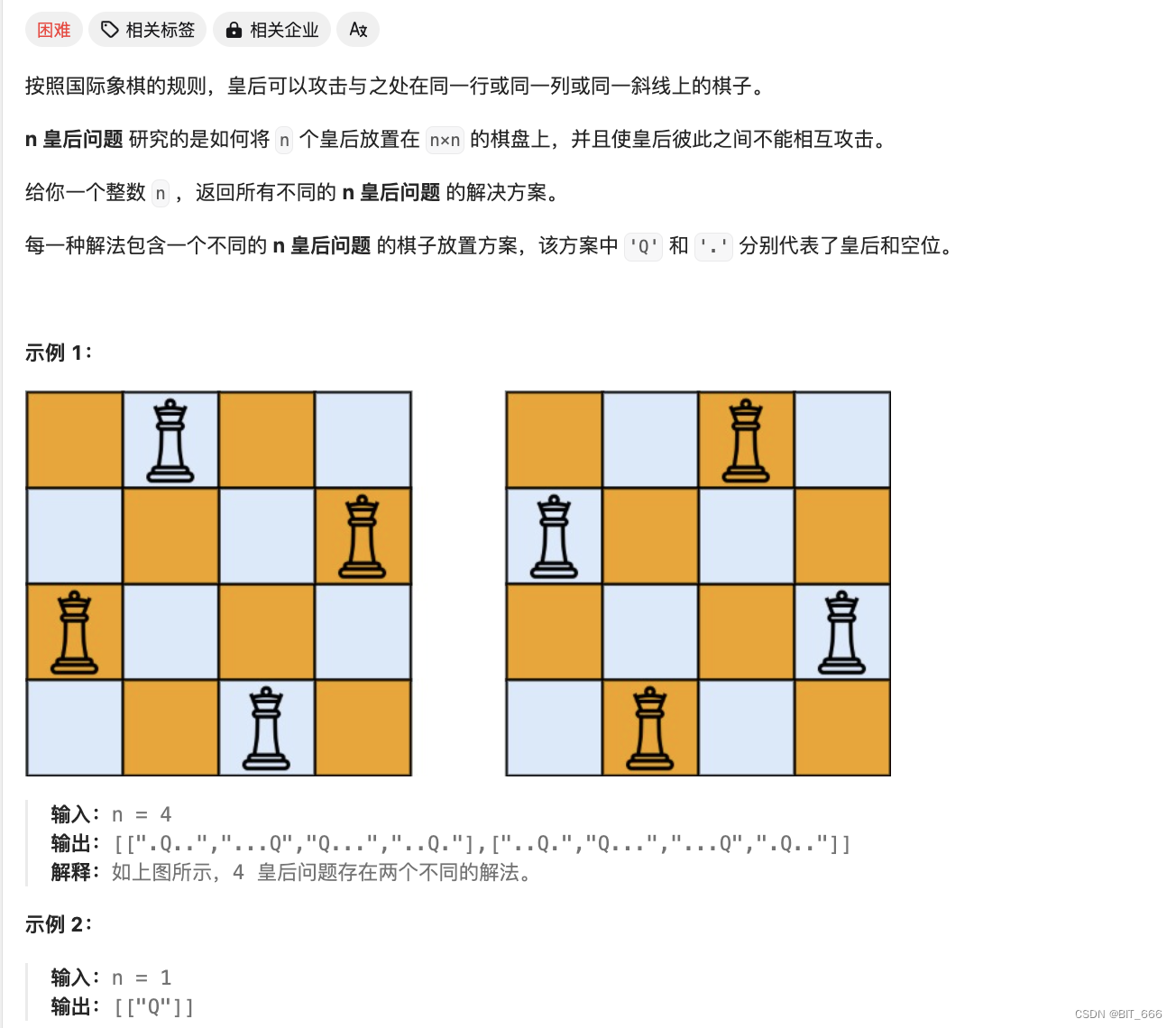
◆ 题目分析
本题和上面括号生成类似,但是棋盘的复杂度提高了,每个棋子每行有 n?个位置,下一个棋子 n-1 个位置,最后的时间复杂度为 o(n!),通过增加 col、pie、na 三个方向的剪枝,提高算法的执行效率。
◆ DFS
class Solution(object):
def solveNQueens(self, n):
"""
:type n: int
:rtype: List[List[str]]
"""
results = []
# 行 左 右 是否可以放置
cols = set()
pie = set()
na = set()
def dfs(n, row, cur):
if row >= n:
results.append(cur)
for col in range(n):
if col in cols or (row + col) in pie or (row - col) in na:
continue
# 判断有效
cols.add(col)
pie.add(row + col)
na.add(row - col)
dfs(n, row + 1, cur + [col])
# 恢复状态
cols.remove(col)
pie.remove(row + col)
na.remove(row - col)
dfs(n, 0, [])
return self.genResult(n, results)
def genResult(self, n, results):
return [[ '.' * i + 'Q' + (n - i - 1) * '.' for i in result] for result in results]
def genResultV2(self, n, results):
re = []
for result in results:
re.append([ '.' * i + 'Q' + (n - i - 1) * '.' for i in result])
return re
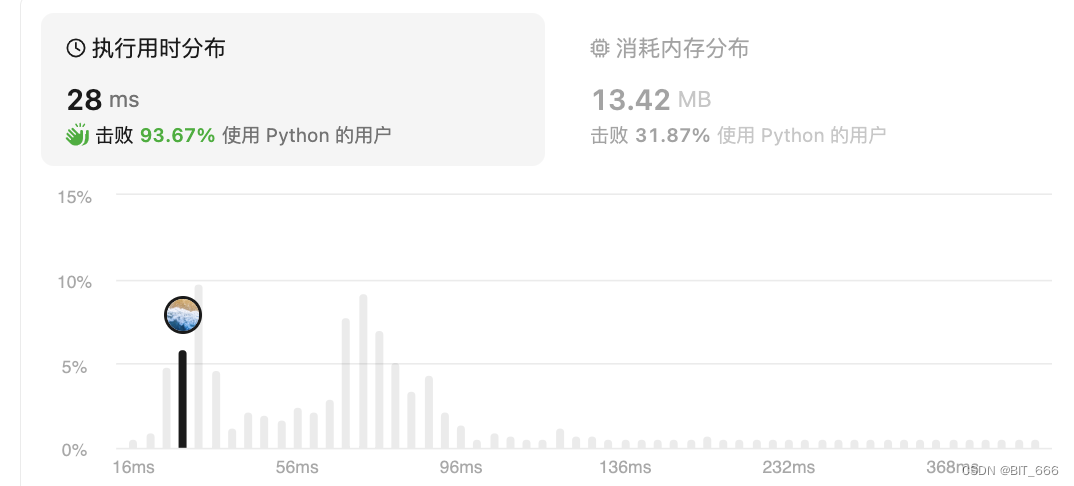
5.Valid-Sudoku [36]
有效数独:?https://leetcode.cn/problems/valid-sudoku/description/
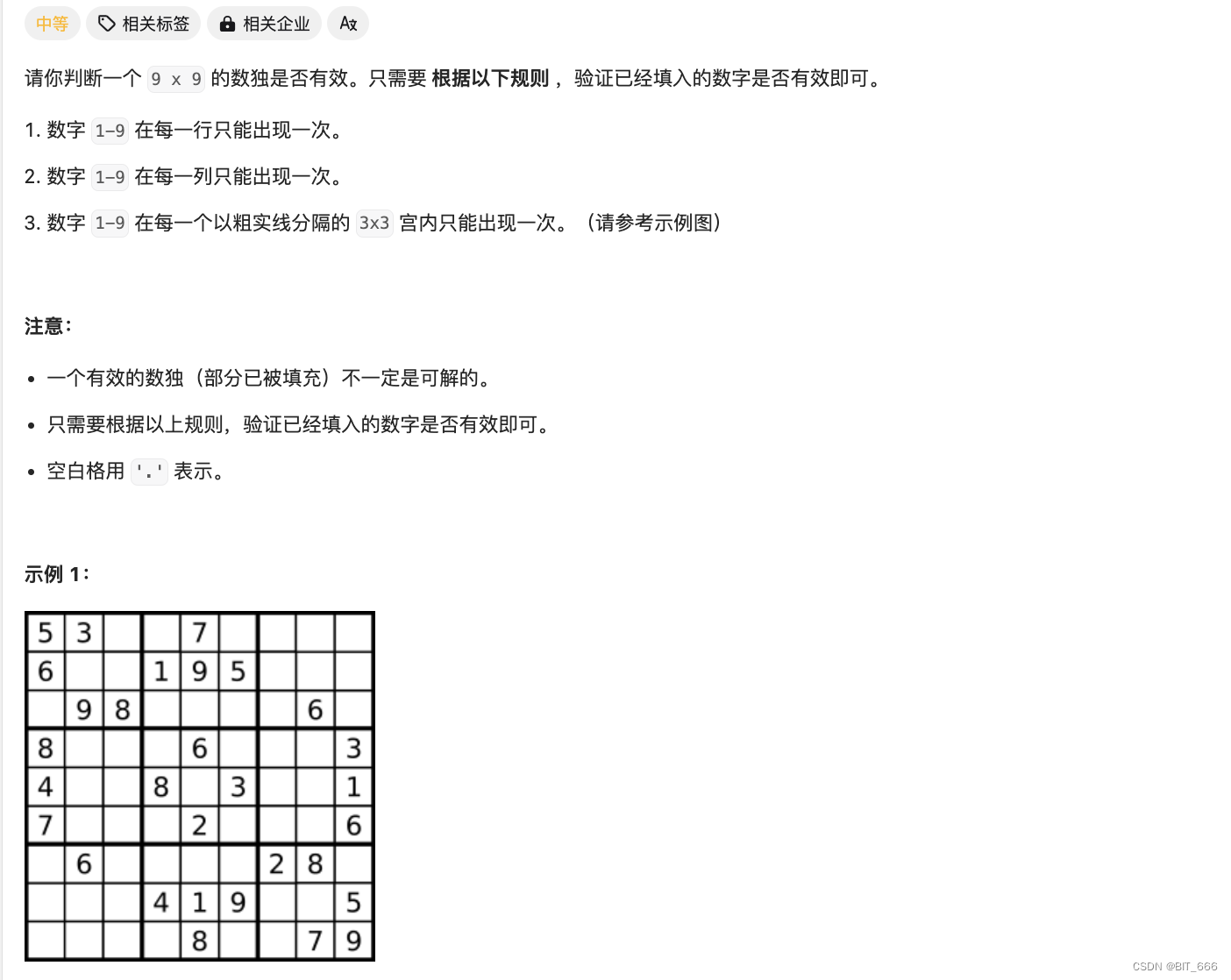
◆ 题目分析
像 N 皇后一样,判断每行、每列是否有重复,再判断每一个 3x3 的区域是否重复。行列很好判断,剩下就是确定每一个方格区域,我们先通过测试得到根据 [i,j] 位置获取分区的代码:
import numpy as np
nums = []
for i in range(9):
for j in range(9):
location = (i // 3) * 3 + j // 3
nums.append(location)
nums = np.array(nums).reshape(9, 9)
print(nums)
所以?location = (i // 3) * 3 + j // 3 就是我们获取元素分区的方法,这样顺序遍历即可。
◆ 遍历实现
class Solution(object):
def isValidSudoku(self, board):
"""
:type board: List[List[str]]
:rtype: bool
"""
# 获取分区: location = (i // 3) * 3 + j // 3
row_set = [[] for _ in range(9)]
col_set = [[] for _ in range(9)]
location_set = [[] for _ in range(9)]
for row in range(9):
for col in range(9):
cur_val = board[row][col]
# 未填写位置过滤
if cur_val == ".":
continue
# 行
if cur_val not in row_set[row]:
row_set[row].append(cur_val)
else:
return False
# 列
if cur_val not in col_set[col]:
col_set[col].append(cur_val)
else:
return False
# 区块
location = (row // 3) * 3 + col // 3
if cur_val not in location_set[location]:
location_set[location].append(cur_val)
else:
return False
return True
if __name__ == '__main__':
s = Solution()
board = [["5", "3", ".", ".", "7", ".", ".", ".", "."],
["6", ".", ".", "1", "9", "5", ".", ".", "."],
[".", "9", "8", ".", ".", ".", ".", "6", "."],
["8", ".", ".", ".", "6", ".", ".", ".", "3"],
["4", ".", ".", "8", ".", "3", ".", ".", "1"],
["7", ".", ".", ".", "2", ".", ".", ".", "6"],
[".", "6", ".", ".", ".", ".", "2", "8", "."],
[".", ".", ".", "4", "1", "9", ".", ".", "5"],
[".", ".", ".", ".", "8", ".", ".", "7", "9"]]
print(s.isValidSudoku(board))
只需要一次遍历,对每一个非 '.' 的字段判断其是否在对应的集合中,有重复则退出,类似 N 皇后一样,相同的数字不能相遇。这道题我们主要学会??location = (i // 3) * 3 + j // 3?这个是我们本题最大的收获。

6.Sudoku-Solver [37]
解数独:?https://leetcode.cn/problems/sudoku-solver/description/
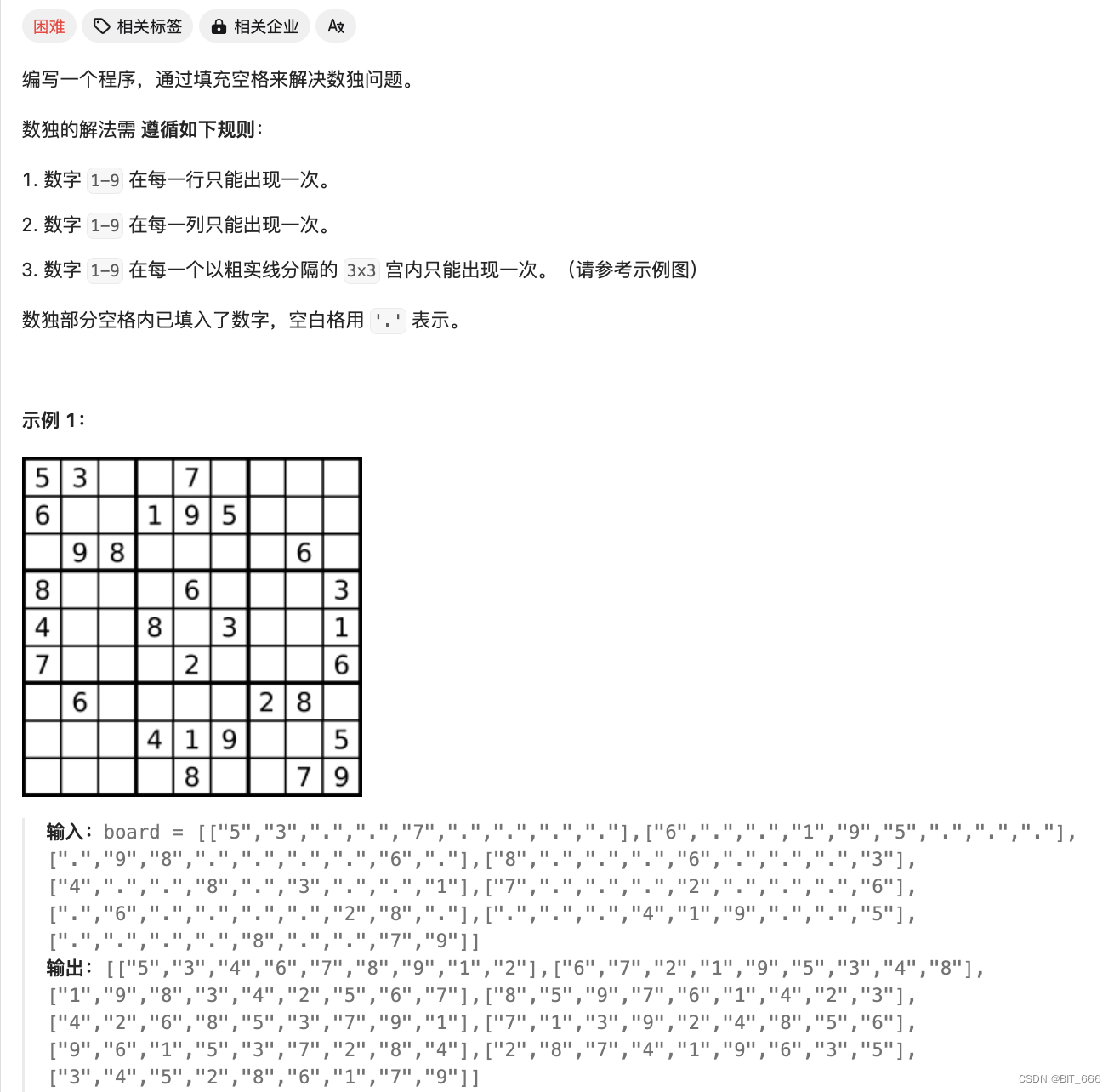
◆ 遍历实现
上面已经实现了如何判断一个数独棋盘是否有效,我们只需要在每一个位置尝试可以使用的数字,然后 DFS 或者 BFS 推进,如果能够把表格填满且判断 isValid == True,则数独解答完毕。
◆ DFS
class Solution:
def solveSudoku(self, board):
"""
Do not return anything, modify board in-place instead.
"""
self.backtracking(board)
def backtracking(self, board):
# 若有解,返回True;若无解,返回False
for i in range(len(board)): # 遍历行
for j in range(len(board[0])): # 遍历列
# 若空格内已有数字,跳过
if board[i][j] != '.': continue
for k in range(1, 10):
if self.is_valid(i, j, k, board):
board[i][j] = str(k)
if self.backtracking(board): return True
board[i][j] = '.'
# 若数字1-9都不能成功填入空格,返回False无解
return False
return True # 有解
def is_valid(self, row, col, val, board):
# 判断同一行是否冲突
for i in range(9):
if board[row][i] == str(val):
return False
# 判断同一列是否冲突
for j in range(9):
if board[j][col] == str(val):
return False
# 判断同一九宫格是否有冲突
start_row = (row // 3) * 3
start_col = (col // 3) * 3
for i in range(start_row, start_row + 3):
for j in range(start_col, start_col + 3):
if board[i][j] == str(val):
return False
return True

◆ DFS 剪枝
class Solution(object):
def solveSudoku(self, board):
"""
:type board: List[List[str]]
:rtype: None Do not return anything, modify board in-place instead.
"""
valid_row = [set(range(1, 10)) for _ in range(9)] # 行可用数字
valid_col = [set(range(1, 10)) for _ in range(9)] # 列可用数字
valid_block = [set(range(1, 10)) for _ in range(9)] # 块可用数字
# 待填区域
candidate = []
for row in range(9):
for col in range(9):
# 更新当前 row、col 可用数字
cur_val = board[row][col]
if cur_val != ".":
cur_val = int(cur_val)
valid_row[row].remove(cur_val)
valid_col[col].remove(cur_val)
cur_block = (row // 3) * 3 + col // 3
valid_block[cur_block].remove(cur_val)
else:
# 追加待填区域坐标
candidate.append((row, col))
self.backtrack(candidate, 0, board, valid_row, valid_col, valid_block)
return board
def backtrack(self, _candidate, position, board, valid_row, valid_col, valid_block):
if position == len(_candidate):
return True
# 获取当前代填位置信息
row, col = _candidate[position]
block = (row // 3) * 3 + col // 3
# 三个交集获取当前位置可用元素
for val in valid_row[row] & valid_col[col] & valid_block[block]:
valid_row[row].remove(val)
valid_col[col].remove(val)
valid_block[block].remove(val)
# Process: 判断可行性
board[row][col] = str(val)
# Drill Down: 下一层
if self.backtrack(_candidate, position + 1, board, valid_row, valid_col, valid_block):
return True
# Restore: 恢复状态
board[row][col] = "."
valid_row[row].add(val)
valid_col[col].add(val)
valid_block[block].add(val)
return False上面的 DFS 从 range(1-10) 分别尝试,但是我们可以通过 set 缓存提前得知当前位置的可用数字从而缩减检索范围。时间复杂度降低,但是因为额外使用了 3 个 List[Set()],所以空间复杂度较高。这里也遵循前面讲到的递归回朔的执行顺序,Process -> Drill Down -> Restore。
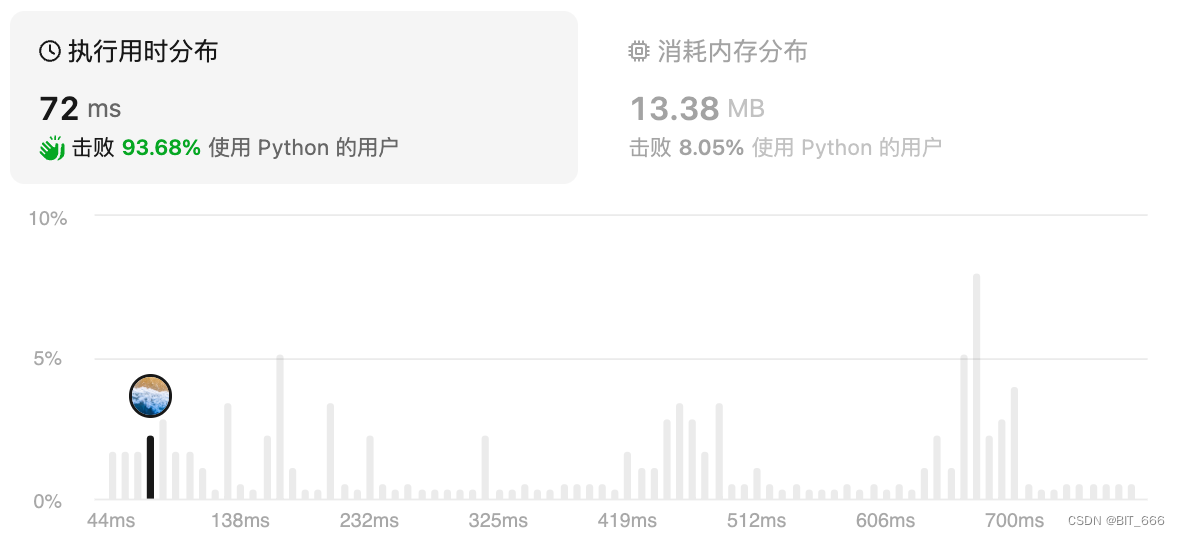
四.总结
这里带来剪枝的一些经典算法例题,可以看到剪枝可以大幅提高程序执行的效率,其思想是尽量避免重复工作或者无意义的探索。除了剪枝外,还有另外一种搜索中常用的高级搜索方法即双向 BFS,其思想则是左右开弓,提高逼近答案的速度,后面我们介绍双向 BFS 的思想与题目。
本文来自互联网用户投稿,该文观点仅代表作者本人,不代表本站立场。本站仅提供信息存储空间服务,不拥有所有权,不承担相关法律责任。 如若内容造成侵权/违法违规/事实不符,请联系我的编程经验分享网邮箱:chenni525@qq.com进行投诉反馈,一经查实,立即删除!
